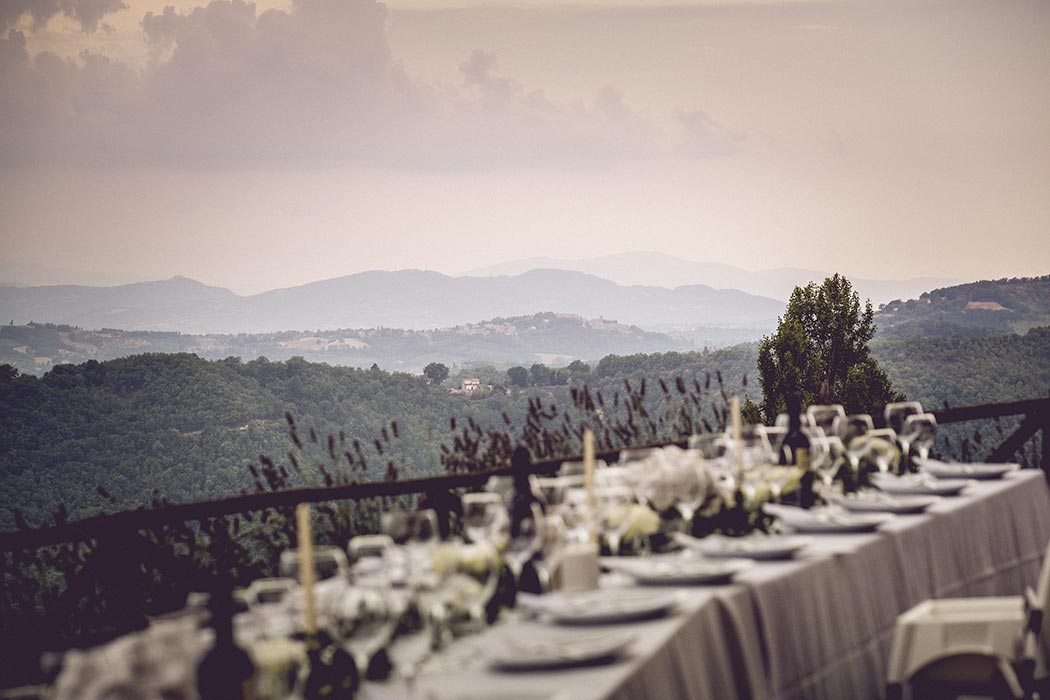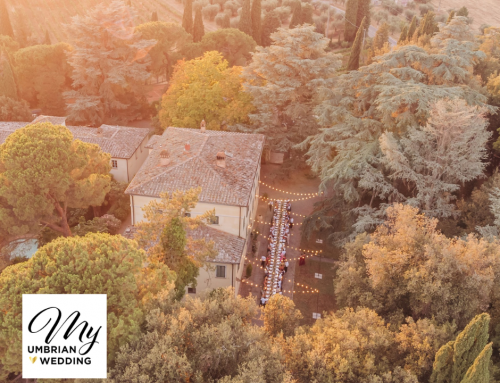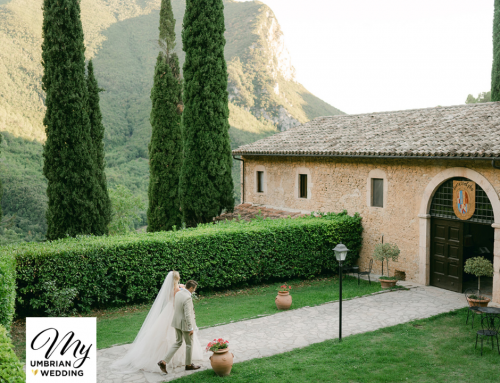To all the couples who need to get married in Italy, suggestions about Umbria destination locations is a basic tip to follow!
Enjoy your Southern Umbrian places and your Favourite Wedding Planner’ll help you to organize eveything at the best!
MONTEFALCO: As soon as you look at the Umbrian village of Montefalco, you understand in an instant why the with its clear medieval suggestions has been included in the circuit of the most beautiful villages in Italy. Located in the province of Perugia, thanks to the enchanting geographical position in which it is located, Montefalco has obtained the nickname “Railing of Umbria”. From the numerous viewpoints of the town it is possible to observe glimpses of pure beauty ranging from Perugia to Assisi, up to Spello, Foligno, Spoleto, Trevi, Bevagna and Gualdo Cattaneo. Between the borders of Montefalco there are interesting artistic memories, historical finds and important frescoes, and the surroundings of the village are famous throughout the world for the production of red wines with divine organoleptic properties. Olive groves and vineyards draw the territory and there are numerous opportunities for food and wine tours that allow you to deepen the art of wine and taste the nectar produced in these lands
TREVI: Trevi is one of the most famous cities in Umbria, built in Roman times near the Via Flaminia and the banks of the Clitunno, just near Assisi, the city of San Francesco, Montefalco and the area that has become the homeland of Sagrantino. This ancient town is known as the City of Oil and included in the list of the most beautiful villages in Italy. Surrounded by olive trees, Trevi preserves Roman remains, such as the mighty walls (1st century BC) that surround the town, and medieval ones such as Porta del Bruscito, Porta del Cieco, Porta San Fabiano and the arch of Mostaccio which give the place a particularly charming atmosphere. The heart of the historic center is Piazza Mazzini, closed at the corner by the 13th century Town Hall with the civic tower
MONETCASTELLO DI VIBIO: a few kilometers from Todi you will find this a very small Umbrian village where the smallest theater in the world is located, noteworthy for the beauty and dreamy atmosphere in which it is located
FONTI DEL CLITUNNO: along the ancient Via Flaminia, between Spoleto and Foligno, in the municipality of Campello sul Ciutunno you will find an enclosed nature park, a small paradise inhabited by swans, animals and other aquatic animals. In its entirety the sources of the Clitunno river which are sources known since ancient times for the cathartic and soothing power of the place on the soul of the visitor.
CASTEL RITALDI: Agricultural center located in the plain of Spoleto, with various artisan companies such as mills and oil mills, it stands on top of the Scigliano hill, at the foot of the Martani Mountains which from right and left surround it in a hemicycle and dominates an area still largely agricultural woods and suggestive hilly slopes crossed by small streets that can be traveled on foot, on horseback or by bicycle
TODI: Leave from Bevagna – if time permits, a small detour to Deruta, a world famous majolica production center – towards Todi. Elegant and protected by three circles of walls (Etruscan, Roman and medieval), this city dominates the Tiber valley from the top of the hill on which it is built. Once you arrive, have no doubts and immediately head to Piazza del Popolo, the beating heart of city life and a place from which to enjoy one of the most beautiful views ever, and take a leap into the cisterns below the square. You are ready to take a dip in the Roman era?
NORCIA: Norcia is considered one of the most evocative villages of the Valnerina, the valley of the Nera river that originates in the area of the Sibillini Mountains, on the border between Marche and Umbria. It is possible to admire beautiful scenery of unspoiled nature, especially during the summer flowering, when the Castelluccio plateau shows in all its essence the typical carpet of colorful flowers of its meadows in a perfect mosaic of colors and scents. The other aromas that you will certainly not forget are those of the Norcian gastronomy, ranging from the famous Black Truffle to saffron, from sheep cheeses, to spelled legumes and Castelluccio lentils. In the main square, the eye will be immediately struck by the beautiful Church of San Benedetto. After visiting the main beauties of the city, we suggest you take at least one of the many walks in the most unspoiled nature. The valleys of the Nera river are the perfect setting for hiking and mountain biking, trekking, horse riding, with the possibility of rafting and canoeing along its waterways. The mountain area of Forca Canapine, at over 1500 meters above sea level, is the ideal place for alpine skiing and home to the best free flight school in Europe. Are you ready to get to know the homeland of the black truffle and the beauties of the Umbrian territory up close through the holiday packages in Norcia?
SPOLETO: In this town the Roman era crosses with the medieval one, to merge into a lively and joyful contemporaneity: not only historical sites to visit (the famous Ponte delle Torri, impressive for its height and majesty), but also events that enliven this place with culture and music. The most important event, which attracts thousands of visitors every year, is the Festival dei Due Mondi, a riot of concerts, theater, opera and dance performances that will immediately put you in a good mood!
CASCIA: A famous pilgrimage destination due to the sanctuary erected in the name of Santa Rita, Cascia is located in the most mountainous area of Umbria, at an altitude of over 650 m. However, there are many reasons for choosing to undertake a trip to Cascia. The warm and centuries-old hospitality, good food, a spiritual pilgrimage, the possibility of taking long walks and excursions in nature, are just some of the main ones. Cascia contains many peculiarities, starting with its surroundings. Examples of the first order are the Rocca Porena (the birthplace of Santa Rita), an enchanted and peaceful medieval village, or Norcia, another beautiful town rich in history and things to see.
GUARDEA: from this small Umbrian village you can go down to the Alviano lake where you can practice bird watching, an oasis of protectionist wwf for aviation and especially migratory fauna. Guardea with the Aiola park full of panoramic points and lots of relaxation; with the Castello del Poggio, the church of Sant’Egidio, the castle of Frattuccia and the suggestive fortified village
AMELIA: As soon as you enter the city you can admire the imposing fortified work of the polygonal walls, built between the third and second centuries BC. Among the monuments to visit in the city are the Cathedral, the most important religious building in Amelia, the monastery of San Magno, the church of San Francesco and the rural church of the Madonna delle Cinque Fonti, which according to legend offered a stay to San Francesco. Noteworthy are the fifteenth-century Palazzo Nacci and the sixteenth-century Palazzo Farrattini and Petrignani, the Civic tower, symbol of municipal liberties, and the splendid eighteenth-century theater. The former Boccarini College is home to the archaeological museum, where it is possible to admire the imposing bronze statue of the Germanicus, nephew of the emperor Tiberius, and other important artifacts found in the Amerine territory. 3 km from the historic center, surrounded by nature in the Amerini hills, the beautiful convent of the Santissima Annunziata, built in the 15th century on a pre-existing hermitage. As well as on the surface, Amelia also reserves exciting surprises in the subsoil, in a path that leads to the discovery of the ancient Roman cisterns, a work of hydraulic engineering built around the second century AD, and accessible to the public from Piazza Matteotti. Among the natural beauties to report: the Rio Grande stream that creates a lake called Lago Vecchio, reachable by a pedestrian path and frequented by fishing lovers, and for those who love the forest, 4 km from the city, there is a large park with riding school, immersed in a holm oak wood, “La Cavallerizza”.
NARNI: The ancient origins of Narni date back to 300 BC. when the Romans settled in the Umbrian city, an important fortification for the construction of the Via Flaminia which will be known as Narnia. But the atmosphere that has marked the city and is still breathed today is the medieval one, it is possible to admire the Rocca Albornoz in a dominant position with respect to the medieval village. Inside the courtyard, the first medieval theme park in Umbria was set up, where a fourteenth-century village was rebuilt and where themed shows are held on the occasion of historical re-enactment events. Remember that the famous novel “The Chronicles of Narnia” takes its name from Narni where the stories were set. The current seat of the Town Hall, Palazzo del Podestà dates back to the 13th century and preserves, in addition to various archaeological materials, including an Egyptian mummy, a fresco attributed to Torresani. The church of San Domenico is a religious complex built in the twelfth century and today used as municipal offices. The chapel of the Rosary with a vault frescoed by Flemish artists of the fifteenth century is striking.






